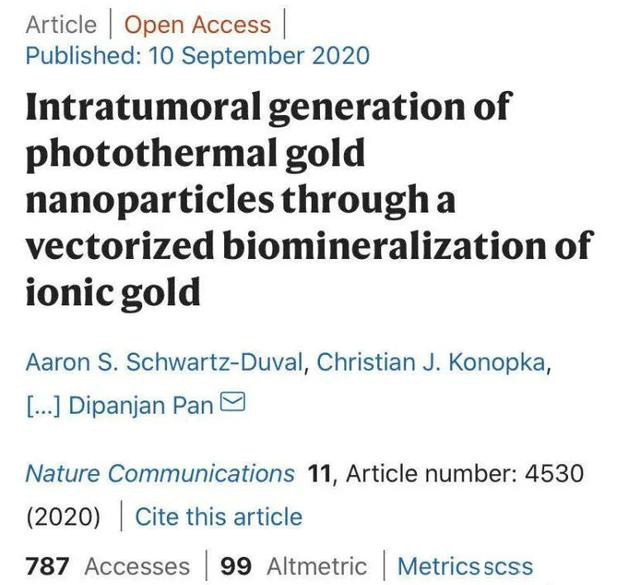The history of human struggle with cancer is very long, from surgery, radiotherapy, and chemotherapy, to immunotherapy, targeted therapy, intervention, radiofrequency, and other treatment methods with the advancement of medical science. Today, more and more effective and accurate cancer treatment methods have been continuously applied, and nano-Venus is a new material for attacking cancer.
Gold is an excellent source of radiation. Electrons on the surface of gold trap light efficiently, and when the surface of gold turns into the shape of pegs with long and spike, the excited electrons capture light at the tip, generating higher temperatures.
Prior studies have indicated that the metal particles or other materials can be sent to a tumor, which in turn is manipulated by laser or magnetic fields, and eventually to destroy malignant cells by heating them. In addition, the researchers pointed out that gold particles can burn hotter if they are shaped into stars, and nano-Venus is exactly the gold particles shaped into stars.
In fact, there have been studies using gold nanostars, nanotubes, and other nanoparticle structures to fight cancer, but one of the main obstacles is how to bring these substances into the tumor.
Now, researchers have discovered a method that can directly cultivate gold nanoparticles in cancer cells within 30 minutes, which can help imaging and even heat and kill tumors.
The research team used polyethylene glycol (PEG) as a delivery vector for ionic gold. When this substance is used in cancer, the acidic cellular microenvironment converts gold from an ionic form into plasma gold nanoparticles. The research team said that this situation can happen within 30 minutes, which is much faster than other treatments that take 24 hours or more.
In experiments on mice, the researchers further studied this process. They first cultivated gold nanoparticles in the tumors of living mice and then heated them with a laser to kill the cancer cells. Although this method has been proven in the past, gold usually cannot grow inside cells before.
As a typical element used in biomedical applications, gold has been facing the most challenging research to find new ways to produce these particles, so that these particles have uncompromising reproducibility and function to promote effective cells. Combine, remove and biocompatibility, and evaluate its long-term impact on human health.
Gold is a typical element for biomedical applications. All along, the most challenging research has been to find new ways to produce these particles that have uncompromising reproducibility and function to promote effective cell binding, clearance, and biocompatibility, and to assess their long-term health effects in humans.
This new research is also a small but important step towards this overall goal, and its findings have been published in the journal Nature Communications.


